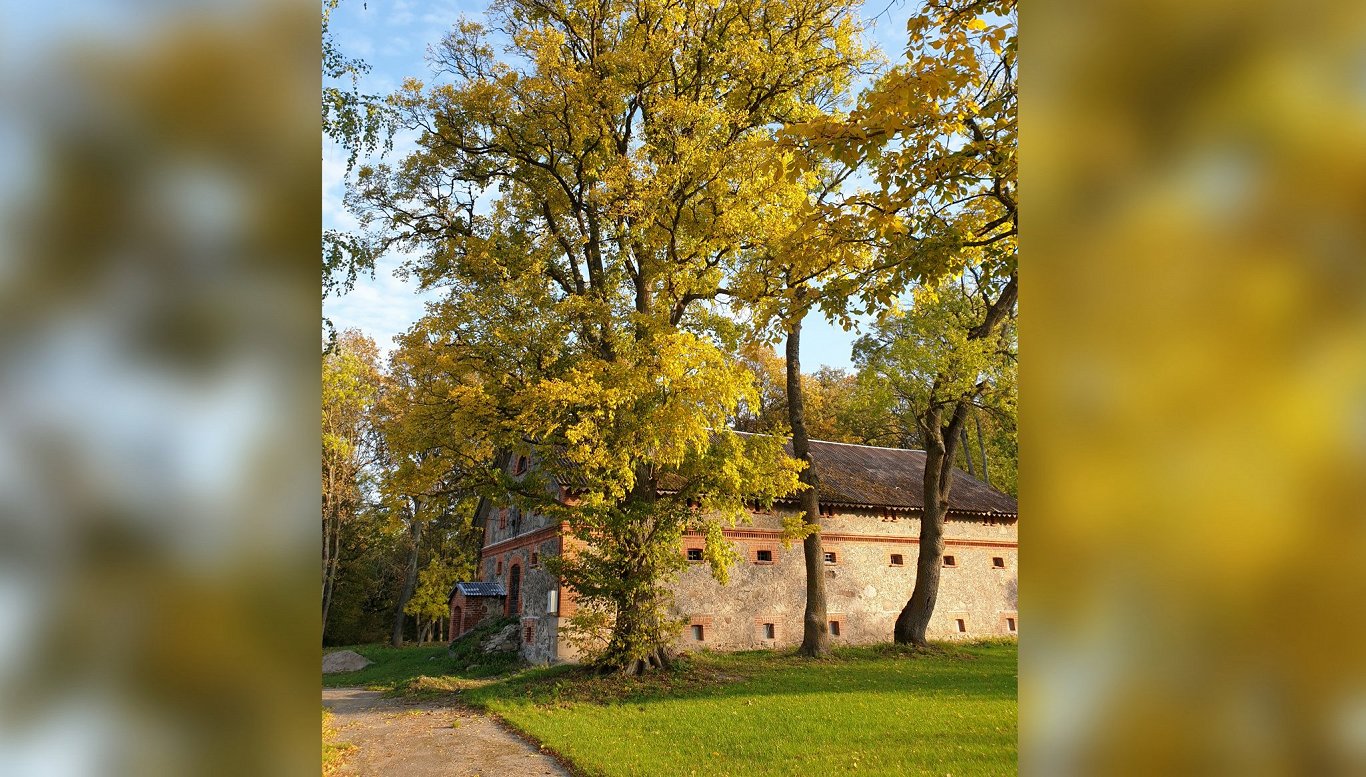There are 2 species of elm in the wild in Latvia – the wych elm or Scots elm Ulmus glabra and the European white elm Ulmus laevis.
Ulmus glabra is a majestic tree of the elm family, found in the wild throughout Latvia in fertile, moderately moist deciduous, and mixed forests, often on river slopes and floodplains. The elm is also found in parks and urban green spaces, distinguished by its mighty stature and broadly branched crown. Elms are found in the wild throughout most of Europe.
Elms are characterized by their grey-brown, longitudinally fissured bark, elongated, serrated leaves with a slightly asymmetrical base, pointed tip, and distinct leaf veins that branch fork-like towards the leaf margin. Both sides of the leaf are covered with coarse hairs. The foliage is usually tinged with yellow in autumn. It flowers in early spring before leafing with inconspicuous pinkish-purple flowers which are wind-pollinated.
The fruit is a small elongated nut covered by a thin wing about the size of a two-cent coin in one plane, which ensures that the seed spreads from the mother tree. They appear in early summer, usually very abundant. The seeds lose germination early, so germinate quickly under suitable conditions. The elms are characterized by strong root protrusions at the base of the trunks. The wood is dense, flexible, and twisted, with a dark heartwood and a distinctive texture, and is suitable for use in joinery, interior furniture, window sills, and household objects, but is not suitable for splitting firewood.
Unfortunately, elms are affected by Dutch elm disease, which was first detected in Europe at the beginning of the 20th century.
The disease is the result of a complex combination of factors, the causal agents being Ophiostoma novo-ulmi and Ophiostoma ulmi, which develop in the woody tissues of the tree and cause them to overgrow, resulting in a reduction in the amount of water supplied to the trees and yellowing and wilting of the leaves of the affected branches.
According to the State Forest Service, in 2023, forest stands where the dominant tree species is elm accounted for 2,175 hectares or only 0.07% of all Latvian forests.
There is reason to believe that the number of elms in Latvia is declining rapidly, especially in the case of large trees. A detailed assessment of 6,217 trees in 11 Latvian parks over the last 5 years shows that the average distribution of the Scots elm is 1.64%, or one in every 61 trees, and about 40% of these are already dead or decaying.
If an elm is decaying, dendrologists recommend that young trees affected by the disease should be felled and disposed of, while large trees that are still alive should be cleaned up by cutting out the damaged branches.
Select text and press Ctrl+Enter to send a suggested correction to the editor
Select text and press Report a mistake to send a suggested correction to the editor
Tell us about a mistake
